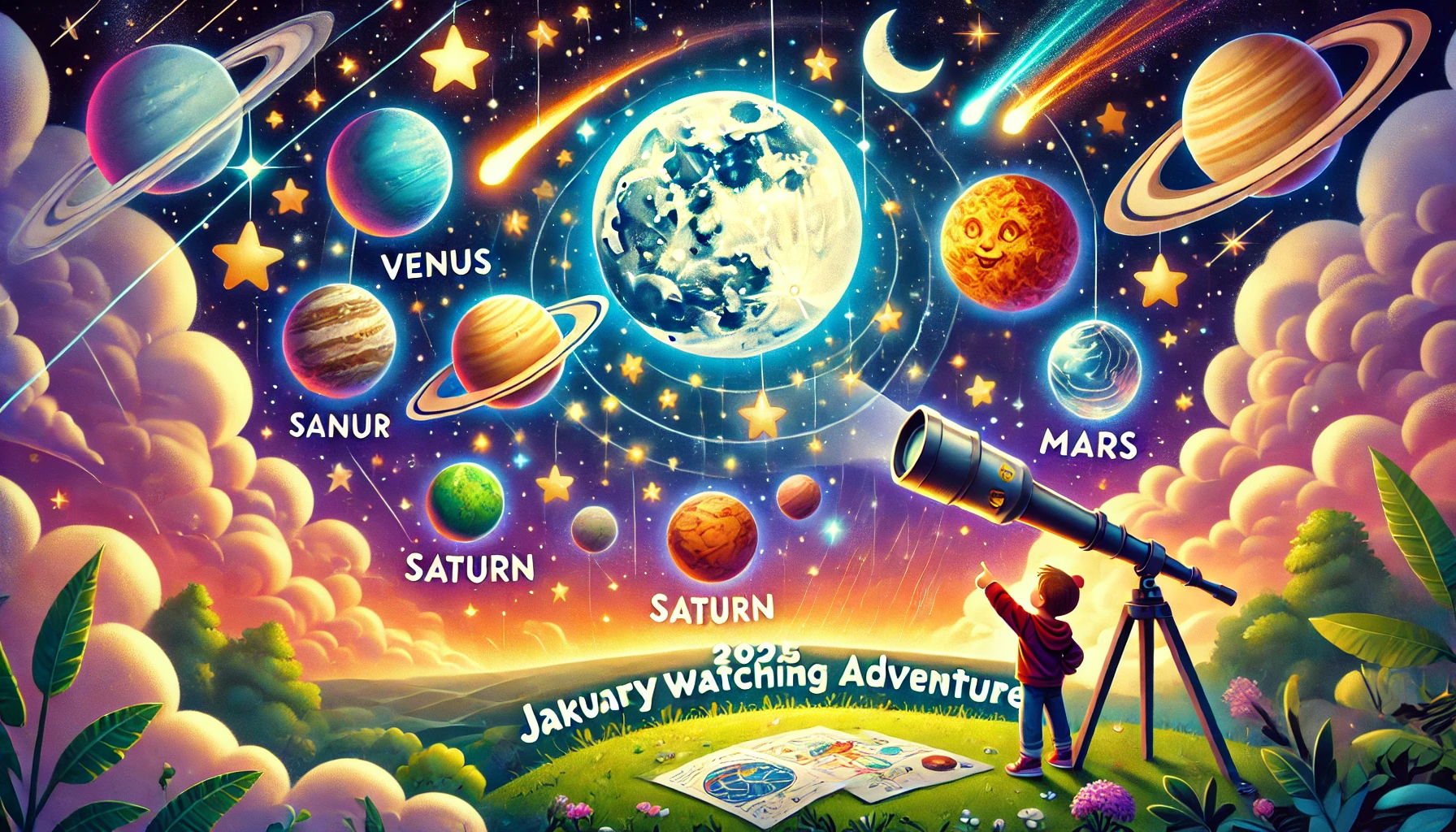Hey there, young stargazers! Ready to embark on an exciting celestial adventure this January? The night sky is full of wonders waiting just for you! Let’s grab our telescopes (or just our eyes) and see what the universe has in store this month.
The Great Planet Party
Imagine throwing a party and inviting your favorite planets. Well, guess what? Venus, Saturn, Jupiter, and Mars are already partying in the sky every evening! You can spot them shining bright in different parts of the sky.
- Venus and Saturn are hanging out in the southwest.
- Jupiter is the party leader high overhead.
- Mars, the red warrior, is marching in the east.
Now, isn’t that a sight to behold? And don’t worry, you won’t need any fancy equipment—just look up after dark!
A Moon and Mars Meet-Up – January 13
Mark your calendar for January 13th! It’s like watching a space game where the Moon plays hide and seek with Mars. If you live in the continental US or Eastern Canada, you’ll see the Moon sliding in front of Mars. It’s like the Moon giving Mars a big celestial hug! Want to know when to look up? Check your favorite skywatching app for the exact time.
The Venus-Saturn Dance – January 17-18
Venus and Saturn are getting pretty close this month, almost like they’re holding hands! On January 17th and 18th, these two planets will be so near to each other that you could cover them both with just two fingers held at arm’s length. It’s a beautiful cosmic dance you won’t want to miss.
Mars at Opposition – All Month Long
Mars is putting on a show all month by being at opposition. This means Mars and the Sun are on opposite sides of the Earth. Mars will shine its brightest, visible all night long! Look to the east as the night falls and watch Mars trek across the sky until dawn.
Shooting Stars – The Quadrantid Meteor Shower
Get ready to make some wishes because the Quadrantid meteor shower is here! This shower is like fireworks from space, with meteors zooming across the sky. The best time to catch them is in the early hours before dawn.
Fun Fact Corner: Why Do Planets Align?
Did you know that planets move in a kind of cosmic racetrack called the ecliptic plane? That’s why they sometimes seem to line up in the sky. But don’t worry, they’re not crashing into each other—they’re just on their own unique paths around the Sun.
So, young astronomers, ready to gaze up and discover the magic of the universe? This January, the night sky is your playground. Keep looking up, and who knows, you might just spot something extraordinary!
Stay curious and keep exploring the wonders above.
